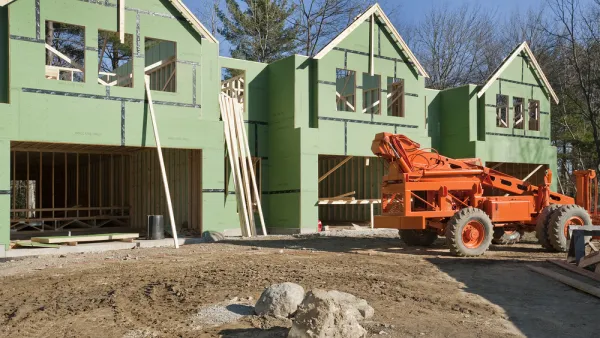How exactly does RAD work and why is there a raging debate over whether it’s putting tenants’ rights and housing affordability in peril?

Last fall, Shelterforce published an article about a new HUD initiative called the Faircloth-to-RAD program, which could help public housing authorities rebuild upward of 227,000 units of "public housing." Public housing gets the scare quotes treatment here because calling it that garnered pushback from some Shelterforce readers who argue the new initiative might build housing, but not public housing.
HUD is using an existing program called Rental Assistance Demonstration (RAD) to help fund the construction of those 227,000 units. RAD allows public housing authorities to switch from using public housing program subsidies, which Congress has largely underfunded, to project-based Section 8 subsidies, which Congress has funded (comparatively) well. Public housing authorities can use the guarantee of Section 8 funding to pull together other loans, tax credits, and grants to rehab or build new housing. Housing authorities can also use RAD to outsource ownership and management of the units to nonprofit or even for-profit entities.
While it’s true that some units built under the program will not be managed by public housing authorities, HUD considers the housing built through Faircloth-to-RAD public housing. Even though those new units will be funded by Section 8 vouchers, the units will count toward the public housing program’s 1999 unit cap.
Therein lies the debate: is RAD a privatization program? What constitutes privatization? Are units built through Faircloth-to-RAD really public housing? Some of the pushback to the article last fall stems from the very real problems created by past public housing redevelopment programs, like HOPE VI, which resulted in significant displacement of public housing tenants, degradation of tenants’ rights, and the loss of more than 43,000 units of public housing that weren’t replaced after demolition. Advocates fear RAD could result in the loss of rights for tenants in the short term and a loss of deeply affordable housing in the long term.
But some of the pushback stems from a misunderstanding of how RAD works. Contrary to common wisdom, RAD does not require public housing authorities to transfer ownership or management to nonprofit or for-profit entities, and fewer than half of RAD-converted units have changed hands so far.
Shelterforce spoke with housing advocates, researchers, tenant organizers, and HUD officials to help clarify how RAD works and why the debate over whether it’s putting tenants’ rights and housing affordability in peril continues to rage.
FULL STORY: Does RAD Privatize Public Housing?

Analysis: Cybertruck Fatality Rate Far Exceeds That of Ford Pinto
The Tesla Cybertruck was recalled seven times last year.

National Parks Layoffs Will Cause Communities to Lose Billions
Thousands of essential park workers were laid off this week, just before the busy spring break season.

Retro-silient?: America’s First “Eco-burb,” The Woodlands Turns 50
A master-planned community north of Houston offers lessons on green infrastructure and resilient design, but falls short of its founder’s lofty affordability and walkability goals.

Test News Post 1
This is a summary

Analysis: Cybertruck Fatality Rate Far Exceeds That of Ford Pinto
The Tesla Cybertruck was recalled seven times last year.

Test News Headline 46
Test for the image on the front page.
Urban Design for Planners 1: Software Tools
This six-course series explores essential urban design concepts using open source software and equips planners with the tools they need to participate fully in the urban design process.
Planning for Universal Design
Learn the tools for implementing Universal Design in planning regulations.
EMC Planning Group, Inc.
Planetizen
Planetizen
Mpact (formerly Rail~Volution)
Great Falls Development Authority, Inc.
HUDs Office of Policy Development and Research
NYU Wagner Graduate School of Public Service




























